Finding your artistic voice is a long but fundamental process that requires work. And experimenting with different drawing styles is a surefire way to quicken that process!
Whether you’re just starting your artistic journey or a seasoned artist looking for a change, there is a different type of drawing style for you to try in this list.
From cartoon styles to photorealism and graffiti, find popular drawing styles to explore in your artwork below!
Table Of Contents
- 1 17 Types Of Drawing Styles To Try
- 1.1 Doodling
- 1.2 Line Drawing
- 1.3 Photorealism
- 1.4 Cartoon Drawing Style
- 1.5 Architectural Drawing
- 1.6 Typography Drawing
- 1.7 Stippling Drawing
- 1.8 Pointillism (With Color)
- 1.9 Tattoo Drawing Style
- 1.10 Diagrammatic Drawing
- 1.11 Geometric Drawing
- 1.12 Anamorphic Drawing
- 1.13 Hatching Drawing
- 1.14 Scumbling Drawing
- 1.15 Fashion Drawing
- 1.16 Caricature Drawing
- 1.17 Graffiti Drawing
- 2 Related Questions
17 Types Of Drawing Styles To Try
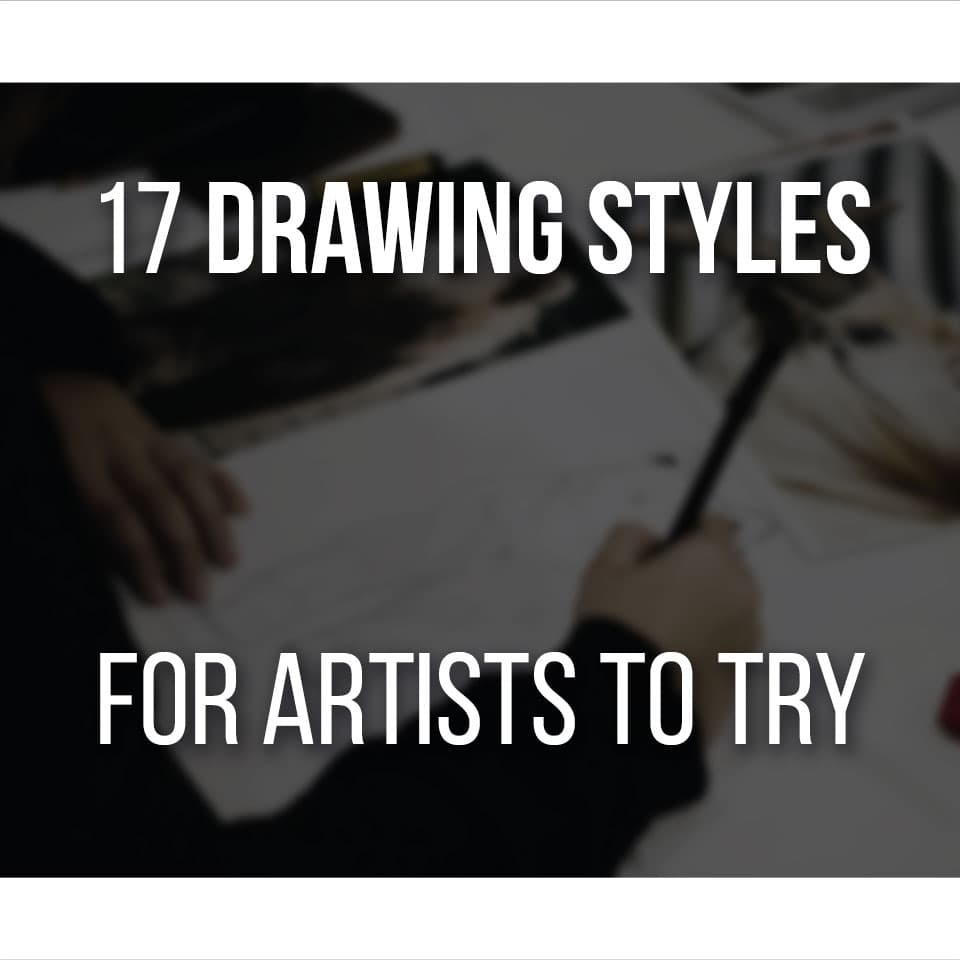
With such a big list of drawing styles, I recommend you to pick one of these at random and try them out!
You can also pick a popular drawing style and then go for the other styles later.
But before we get into that, there are several different mediums you can use for each drawing style.
Some specific mediums for each drawing style are:
- Charcoal Drawing
- Pencil Drawing
- Crayon Drawing
- Pastel Drawing
- Ink Drawing
- Chalk Drawing
- Embroidery Drawing
- Digital Drawing (with drawing tablets and software)
Now, let’s go to the list!
Doodling
For spontaneous artists that like to work thoughtlessly, the doodling drawing style is a great fit!
While usually done with pens and pencils, doodling can be done with any medium. From markers to paint and digital software, anything works.
This creative drawing style unleashes an artist’s creativity and expression. It’s usually considered very simple and informal, but some artists have taken this to a professional level!
Other artists tend to use doodling as a tool to create rough drafts of ideas, just like when doing some thumbnail drawing. And then pick one to develop further into a finished drawing.
You can also use doodling to relax and explore different styles of drawing, so don’t forget to try this one!
Line Drawing

A line drawing style is a style that, as the name mentions, focuses on drawing lines to represent the entire subject!
Even though a line can seem a simplistic approach to drawing, you can create depth and lots of detail in the art piece!
Not only that, but you can do it in a more realistic style or more stylized, totally up to each artist’s taste. You can even include contour drawing in this style, it can be quite fun.
Most line drawings are done in a continuous line drawing manner, but you can do it separately with different horizontal, vertical, and curved lines.
This very expressive drawing style focuses on creating line drawings with different line weights, spacing, and directions. So it’s a more complex style than you might think.
Still, I highly recommend you give it a go, even if just for fun!
Photorealism
If you’re a fan of drawing subjects as close as possible to their reference, a photorealism or hyperrealism drawing style is the choice for you!
This style focuses on creating a highly detailed, realistic drawing, usually as detailed as its photographic reference!
These can be done with any kind of traditional or digital media, requiring a lot of patience and skill.
If you’re considering trying this drawing style, I recommend you be patient and don’t expect to get everything correct right away.
This is one of those drawing styles that takes many days or even weeks to get a single artwork published.
Cartoon Drawing Style
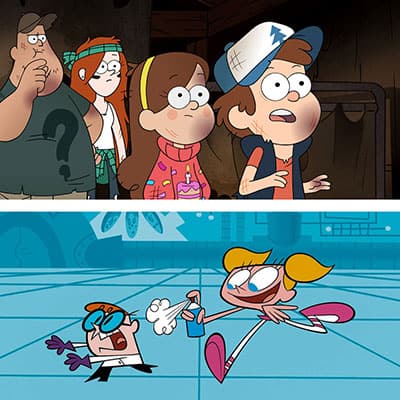
The cartoon drawing style can be considered a very simplified way of drawing and painting.
It usually has characters and environments drawn with very simple geometric shapes, using bold lines to show a clear graphic style.
With that said, there are many cartoon styles nowadays! So click here to check a thorough list of cartoon drawing styles with examples.
Another characteristic of a cartoon drawing of a character, is that it tends to have exaggerated features, such as big eyes or elongated limbs in some cases!
This can be a very fun drawing style to try, with so many options to pick from. So choose one and give it a go!
Architectural Drawing
Often used in architecture and design, the architectural drawing style represents the scale and relationship between elements in a very diagrammatic way!
This is usually a very detailed and technical drawing that tends to be used mostly as a tool for construction and design.
With that said, several artists have taken this drawing style for their own and showcase it as an art portfolio piece!
One interesting thing about this drawing style is that it sometimes includes other elements. For example, small annotations with the dimensions used, since this is meant to be used as a technical drawing!
You require a good knowledge of perspective drawing to get into architectural drawing, though. So here are some articles on One-Point Perspective Drawing, and another one on Two-Point Perspective Drawing to get you started!
Typography Drawing
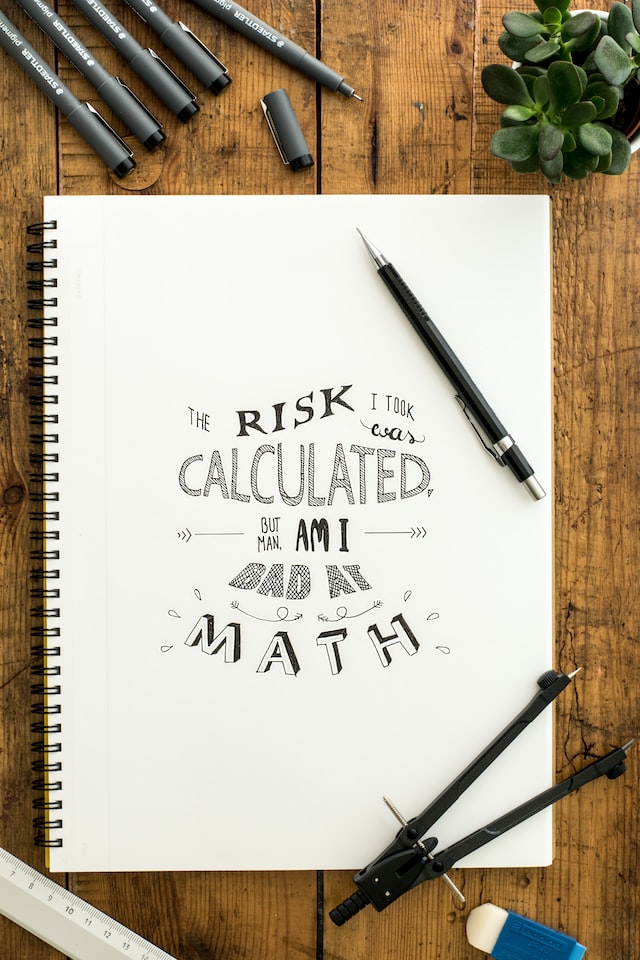
If you’re a fan of lettering, text, and fonts, the typography drawing style is a good match for you!
This drawing style focuses on creating pleasing and, at the same time, readable, artwork. It’s mostly used to create decorative lettering or more technical fonts and typefaces.
You can usually find typographic drawings on branding and advertising, but many artists use this style purely for creating appealing art!
Consider this drawing style if you’re looking for a more technical approach to art, but not as technical as architectural drawing or diagrammatic drawing.
Stippling Drawing
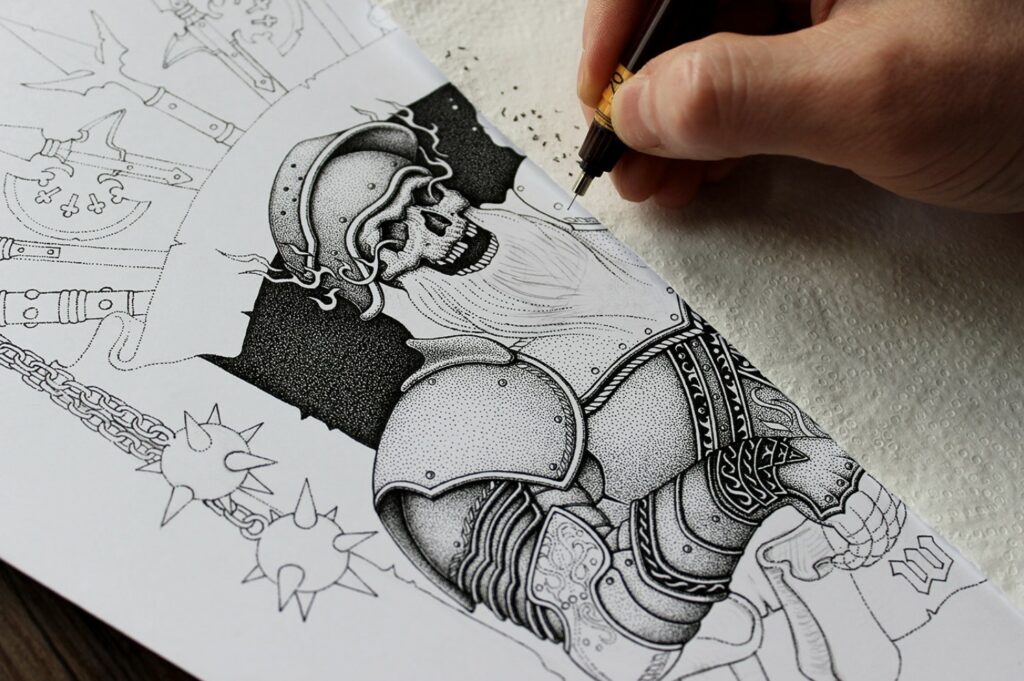
For very patient artists, stippling is a great choice of drawing style!
Stippling involves drawing a series of small dots very close to each other to create texture, depth, and shading.
By varying the distance and size between each dot, you create artwork that can be either more realistic or stylized. This is a very time-consuming process, so you’ll need a lot of patience.
Not only that, but it also requires a high level of precision. So if you have shaky hands like me, this can be a tough match!
And while this style can create a wide range of values, it’s usually done with only black colored pencils or pens.
If you’re looking for something similar but with color, check out the Pointillism drawing style below!
Pointillism (With Color)
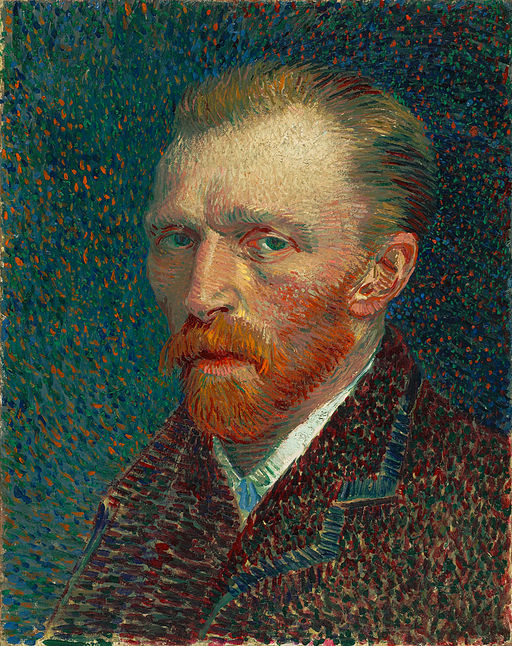
Similar to stippling, pointillism uses a series of closely spaced dots to create a piece of art!
The biggest difference between stippling and pointillism is that while stippling uses black and white media, pointillism tends to use at least one color in the artwork.
Not only that, but pointillism is often used to create more expressive art, while stippling tends to be used for realistic representations.
This is a very rewarding drawing style, you just need to have the patience and precision that it requires!
Tattoo Drawing Style
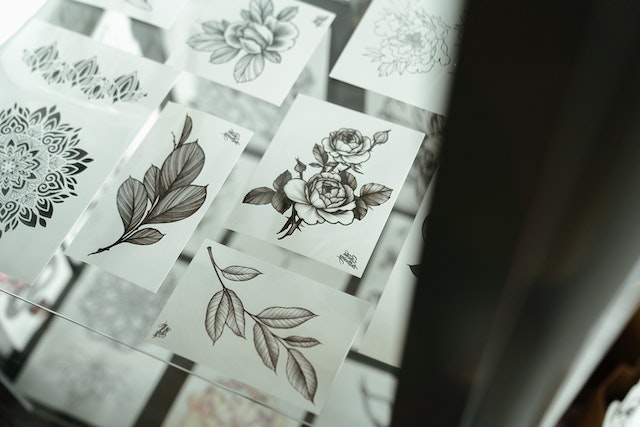
A tattoo drawing style tends to have bold lines and very elaborate patterns. With that said, with so many different tattoo artists around, each will have their unique drawing style!
A tattoo artist will use their original tattoo drawing (usually done on a detailed canvas) to reproduce it onto the skin of a paying customer.
There are also tattoo artists who specialize in just creating the artwork and then letting another “tattooer” apply the art to the skin.
These drawings or designs are usually decorative, but they can also have different meanings for each person. So if you’re up for a challenge, and even consider using a needle to tattoo someone, do try this art style!
Diagrammatic Drawing
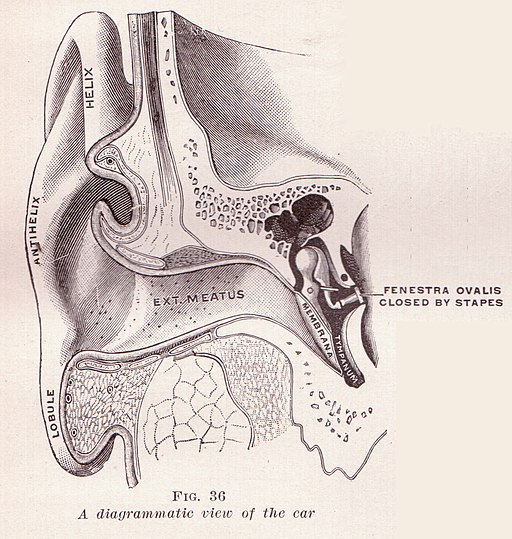
For a more concise and symbolic drawing style, consider giving the diagrammatic drawing style a go!
Normally used in engineering and science, these diagrammatic drawings showcase complex ideas in a simple way.
These drawings (usually) include different design elements. Such as lines, labels, annotations and shapes, to convey the information the drawing requires! Very much like the architectural drawing style.
You can also see diagrammatic drawings next to graphs and charts to help people understand the subject fully.
Geometric Drawing
Using geometric shapes and forms, the geometric drawing style is mainly used in the design and architectural fields.
There’s no restriction on tools and media used in this drawing style! Nowadays, the easiest and fastest way is to use good drawing software.
But you can also use pencils, pens, and markers, for example.
If you’re a fan of drawing geometric shapes such as circles, triangles, cones, and cylinders, then the geometric drawing style is a good choice for you!
Anamorphic Drawing
If you’ve seen those drawings with a 3d effect that gives an illusion of depth, that’s an anamorphic drawing!
These drawings usually appear distorted from certain perspectives and angles, creating visual illusions and challenging your mind.
An anamorphic drawing can be quite creative, and its distortions are usually created with a mix of foreshortening, scaling, and perspective drawing techniques.
If you’re looking to challenge your drawing skills, give anamorphic drawing a try!
Hatching Drawing
Especially useful when shading a drawing, hatching is a drawing style and technique where an artist draws a series of lines parallel to each other to create texture and depth!
This technique takes quite some time to do correctly, as well as a lot of concentration and patience! But it can be highly satisfying to do.
Usually, hatching is done with other techniques such as stippling (which we mentioned above), and cross-hatching, which is similar to hatching but with crossing lines.
Consider trying this drawing style out if you’re looking for a new way to work on shading and depth in your artwork!
Scumbling Drawing

The scumbling drawing style is another unique style, using quick scribbly lines and circles!
The drawings created in this style are usually of a realistic nature, looking to mimic a specific photo reference or subject. But you can also use scumbling to doodle and scribble random ideas!
If you enjoy line drawing, do try scumbling for an expressive and spontaneous way of drawing. This style will also improve your drawing skills and help you relax.
Fashion Drawing
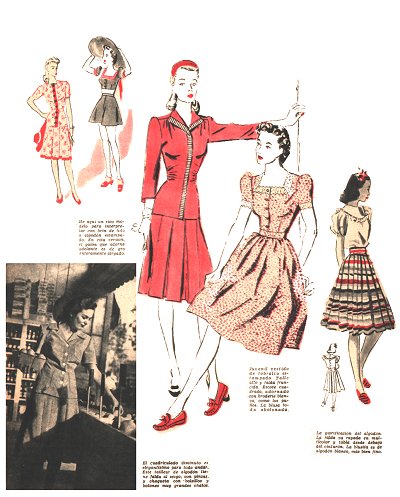
Specifically designed for artists looking to get into the fashion industry, the fashion drawing style is very stylized and has a wide range of elements to draw!
From general clothing and dresses to purses, boots, and even hairstyles, fashion artists need to learn a LOT to create a good fashion drawing style.
This is a very useful tool for fashion designers, so do give it a try!
I do recommend you learn figure drawing before diving into fashion drawing, though.
Figure drawing will give you the bases you need, with interesting poses to use for your fashion drawing style! You can take my complete course on Figure Drawing here to make this process faster and easier.
Caricature Drawing
The caricature drawing style focuses on using exaggeration to make a funny image of (usually) a person!
This caricature can be done with the usual drawing tools by traditional artists, such as a pencil and pen, but there are also many digital artists doing caricature drawing nowadays!
With the help of drawing software, you can easily distort specific features of an image or photo, making it easier to create exaggeration.
And this doesn’t only apply to people. Animals such as dogs and cats can also be caricatured!
You can usually find many caricatures of famous people and politicians online for inspiration.
And if you’re looking to practice your caricature drawing skills, here are the best Portrait Reference Photo Websites for you!
Graffiti Drawing

Commonly used for street art, the graffiti drawing style is a very bold and colorful style usually done with spray paint on public surfaces.
These graffitis are usually done as a social commentary and criticism, but it can also be done as a plain art form to showcase a graffiti artist’s work!
While it started during the 1970s with spray paint and markers, it can be seen in all kinds of media nowadays!
From brushes and pencil, to digital drawing and brushes, you’ll see graffiti drawings on all sorts of tools and canvases.
While this drawing style has been considered vandalism by some people in the past, it has become more accepted nowadays. You can find graffiti style in advertising, illustration, and much more!
Related Questions
I hope these drawing styles have been helpful in getting your creative juices flowing and your motivation up!
Here are a few more related questions about drawing styles.
How Can Artists Develop Their Unique Drawing Style?
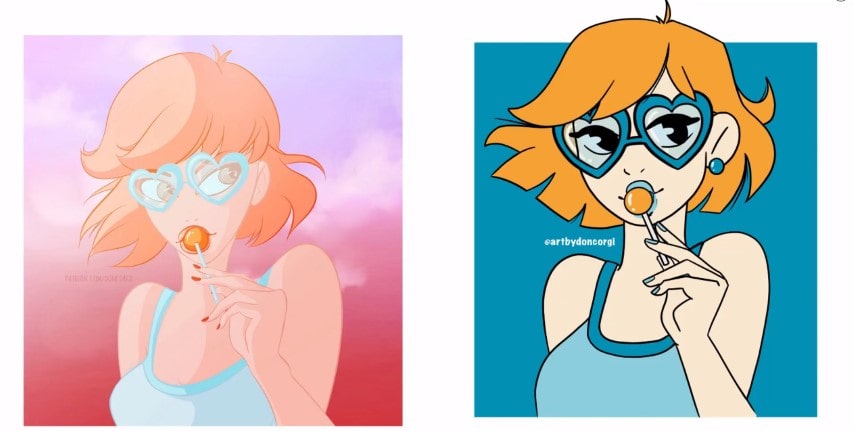
Developing a unique drawing style takes time and focus. This process involves a lot of experimentation, so don’t rush it!
With that said, there are a few tips to help quicken this process of developing a unique drawing style:
- Study your favorite artists. Make a list of the artists you love and save their work for reference. (no, it isn’t cheating!) Understand why they’ve drawn the way they did, and how you can learn from their artwork and style.
- Try new tools. Some art styles are better done with different tools. So experiment a lot with new tools and techniques! Here’s a list of the best art materials for you to try.
- Set up a schedule and practice regularly. Consistent practice will help you improve MUCH faster. So set up a schedule and reserve time to practice your style each day.
- Work on your line quality. Don’t keep your work messy unless it’s a particular style you’re going for! Practice drawing your lines with different weights and textures until you find something you like. This will also make your artwork look more confident.
These are just a few tips, but they’ll help you develop your own unique drawing style much faster!
Remember that you do have to know your bases, such as gesture drawing and figure drawing, if you’re planning on drawing the human body in any style, though!
Can Artists Combine Elements From Different Drawing Styles?
One of the most common ways of coming up with new drawing styles is by combining elements from different styles!
For example, a cartoon artist might use some realistic features in their drawings to make their style more unique! You can even pick some anime art styles to mix with others.
However, always remember that there should be a balance when combining those drawing styles.
I recommend you push the elements as much as possible and then dial back until you find a middle ground that works for you!
How Long Does It Take To Find Your Art Style?
As I’ve mentioned, finding your art style is a long process! So it will depend on each artist.
Many artists mentioned they took anywhere from 4 to 6 years to find their art style. While others only mentioned that it took them up to 60 good pieces of finished artwork.
You can read more about how long it takes and a few tips on finding your own art style here!
And for more styles, check out this list of 13 Types Of Illustration Styles to try today!
Patricia Caldeira is the main writer here at Don Corgi. She's an art teacher with over 20.000 happy students across many platforms and courses!
Enjoy your stay and as always:
Keep on drawing!



